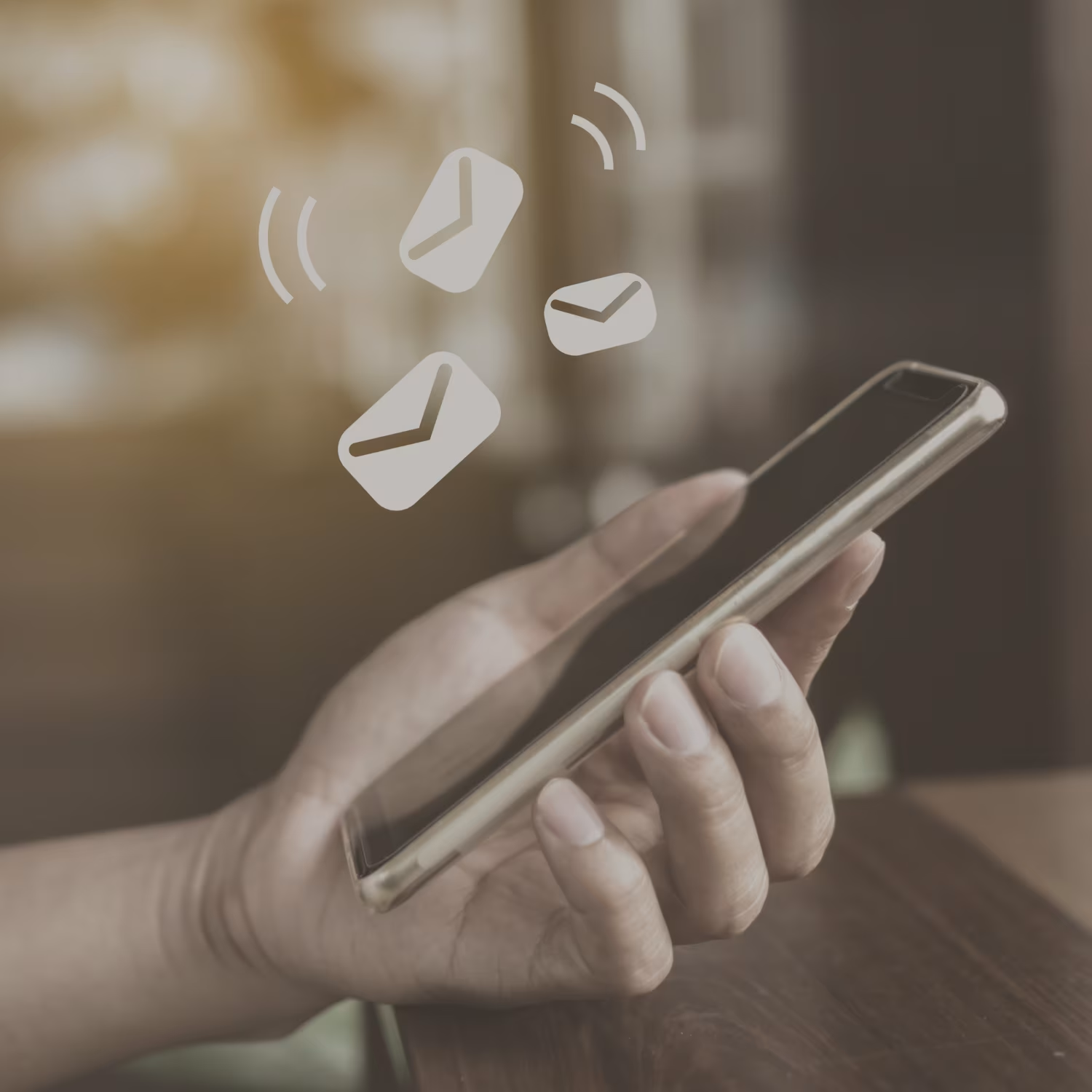Article
Push Notifications vs. SMS: What You Need to Know


Introduction to Push vs. SMS
Businesses today have an array of tools at their disposal to reach and engage their audience. Among these, push notifications and SMS (Short Message Service) stand out as two of the most direct and immediate communication channels. While both serve the purpose of delivering messages to users’ mobile devices, they differ significantly in their approach, capabilities, and cost structures.
The choice between push notifications and SMS can significantly impact a company’s communication strategy, user engagement, and ultimately, its bottom line. Each channel has its own strengths and weaknesses, making them suitable for different scenarios and objectives. For instance, push notifications excel in delivering real-time, context-aware messages to app users, while SMS boasts near-universal reach and high open rates.
Selecting the right communication channel is crucial for several reasons:
- User Experience: The chosen channel directly affects how users interact with your brand. An inappropriate or overused channel can lead to frustration and disengagement.
- Cost-Effectiveness: Different channels come with varying cost structures. Understanding these can help optimize marketing budgets and maximize ROI.
- Message Delivery: The nature of your message may be better suited to one channel over the other, affecting its impact and effectiveness.
- Audience Reach: The demographic and technological preferences of your target audience play a significant role in determining which channel will have the greatest reach.
- Compliance: Different regions have varying regulations regarding electronic communications, making channel selection a matter of legal compliance as well.
As we delve deeper into the comparison between push notifications and SMS, with a particular focus on cost considerations, this blog aims to provide a comprehensive guide to help businesses make informed decisions about their communication strategies. By understanding the nuances of each channel, companies can tailor their approach to best serve their objectives while optimizing their resources.
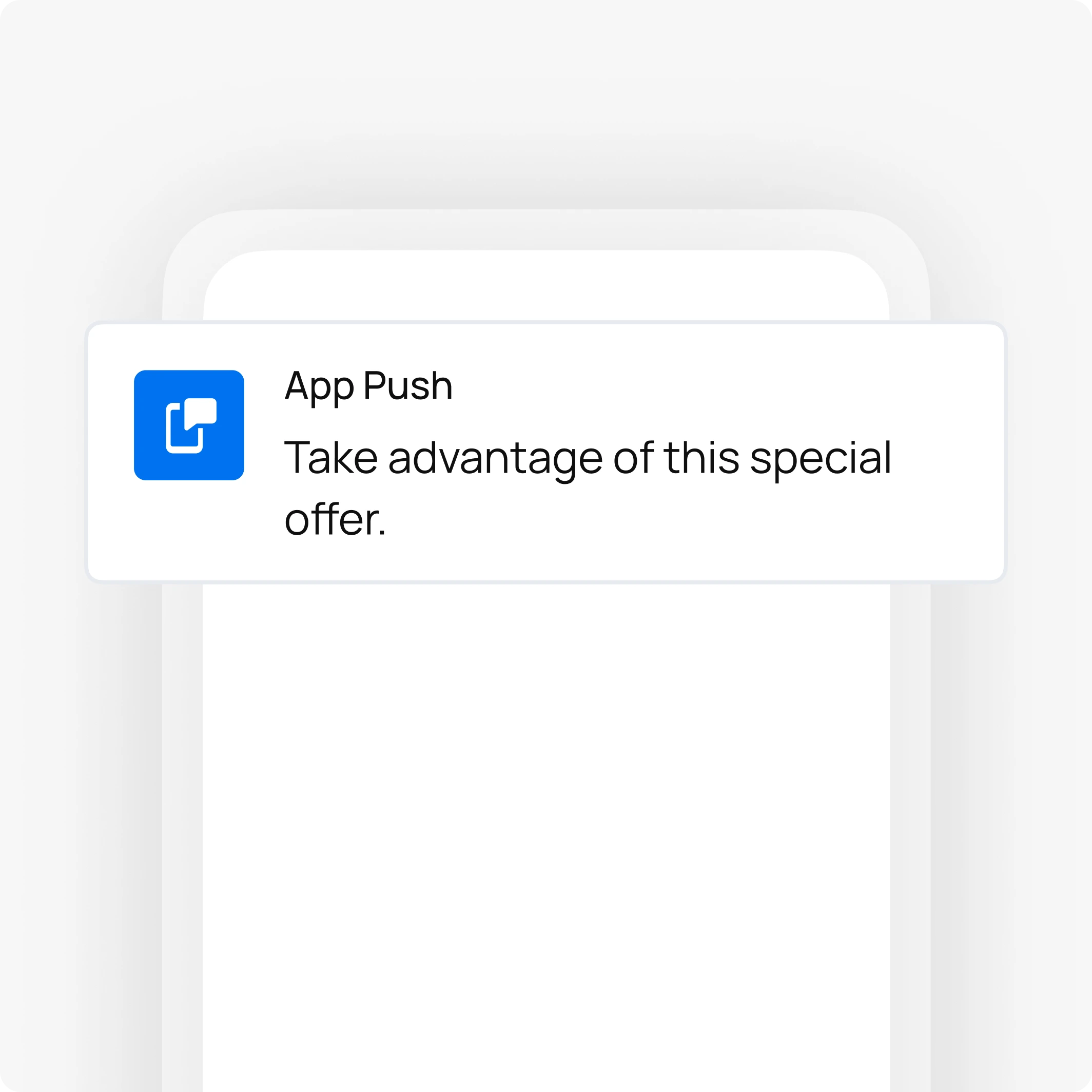
Understanding Push Notifications vs SMS
What are Push Notifications?
Push notifications are messages sent directly to a user’s mobile device or desktop browser that appear as pop-up alerts. These notifications can be received even when the user is not actively using the app or website that sent them. Key characteristics of push notifications include:
- They appear on lock screens or in the top section of mobile devices
- App publishers can only send them if the user has installed their app
- Users must opt-in to receive push notifications
- They can include rich media like images, videos, or interactive buttons
- Push notifications can be personalized based on user behavior or preferences
What are SMS?
SMS (Short Message Service) are text messages sent directly to a user’s mobile phone number. Unlike push notifications, SMS:
- Do not require an app installation or internet connection
- Are limited to 160 characters of text (though longer messages can be split into multiple SMS)
- Can be sent to any mobile phone with SMS capability
- Typically have higher open rates than other forms of communication
- Are charged on a per-message basis by mobile carriers
Push Notifications vs SMS
When comparing push notifications and SMS, several key differences emerge:
- Delivery Method: Push notifications require an app installation and internet connection, while SMS can be sent to any mobile phone with cellular service.
- Rich Media: Push notifications can include images, videos, and interactive elements, whereas SMS are limited to text only.
- Cost Structure: Push notifications typically have a fixed cost based on the number of subscribers, while SMS are charged per message sent.
- Character Limit: Push notifications have no strict character limit, but SMS are typically limited to 160 characters.
- User Opt-in: Push notifications require explicit user permission, while SMS can be sent to any phone number (though regulations may require opt-in for marketing messages).
- Targeting and Personalization: Push notifications offer more advanced targeting and personalization options based on user behavior within an app.
- Delivery Speed: Both can be near-instantaneous, but SMS may have a slight edge in reliability, especially in areas with poor internet connectivity.
- Global Reach: SMS has broader global reach, as it doesn’t require smartphones or internet access.
- Analytics: Push notifications typically offer more detailed engagement analytics compared to SMS.
- User Perception: Push notifications are often seen as less intrusive than SMS, as they’re associated with an app the user has chosen to install.
Understanding these differences is crucial for businesses to choose the most appropriate communication channel for their needs and target audience. The decision between push notifications and SMS often depends on factors such as the type of message, target audience, budget, and desired engagement metrics.
User Experience and Preferences
Consumer Attitudes Towards Push Notifications and SMS
Push notifications and SMS have distinct user experiences that impact consumer attitudes:
Push Notifications:
- Generally seen as less intrusive than SMS
- Offer more flexibility in content and rich media
- Can be easily managed through app settings
SMS:
- Viewed as more direct and personal
- Higher open rates, often perceived as more urgent
- Can be seen as intrusive if overused
Generational Differences in Channel Preferences
Different generations show distinct preferences for communication channels:
Generation Z (Born mid-1990s to early 2010s):
- Prefer instant messaging and social media platforms
- Comfortable with push notifications and quick, visual communication
- 37% prefer social media for brand communications
Millennials (Born early 1980s to mid-1990s):
- Value authenticity and open communication
- Prefer interactive platforms like messaging apps and email
- More likely to find marketing messages relevant across various channels
Generation X (Born mid-1960s to early 1980s):
- Prefer straightforward, concise communication
- Appreciate emails and face-to-face interactions
- Adapt well to digital channels but still value traditional methods
Baby Boomers (Born mid-1940s to mid-1960s):
- Prefer email (88%) and mail (52%) for brand communications
- Value personal connections and formal communication
- Less likely to find marketing messages relevant across most channels
Key insights:
- Younger generations (Gen Z and Millennials) are more receptive to push notifications and digital communication methods
- Older generations (Baby Boomers and Gen X) tend to prefer more traditional channels like email and phone calls
- Millennials appear to be the most trusting of marketing messages across various channels
To effectively engage users across generations, businesses should adopt a multichannel approach, personalizing communication strategies to align with generational preferences. This may involve using a mix of push notifications, SMS, email, and other channels to reach different age groups effectively.
Technical Considerations
Implementation Complexity
Push Notifications:
- Moderate complexity up front but easy to use once implemented
- Requires integration with mobile app or web browser
- SDK (Software Development Kit) provided by most push notification services
- Implementation time: typically 1-3 days for basic setup
SMS:
- Relatively simple implementation
- Can be integrated via API or web interface
- No app required; works with any mobile phone
- Implementation time: often less than a day for basic setup
Integration with Existing Systems
Push Notifications:
- Seamless integration with mobile apps and websites
- Can be integrated with CRM systems, marketing automation tools
- Supports rich media and interactive elements
- Challenges may arise with cross-platform consistency (iOS vs Android)
SMS:
- Easy integration with most existing systems via APIs
- Compatible with legacy systems and databases
- Limited to text-only content (160 characters per message)
- May require additional steps for compliance and opt-in management
Delivery Reliability
Push Notifications:
- Dependent on internet connectivity
- May be affected by app permissions or user settings
- Delivery rates: up to 80% on average
- Real-time delivery when device is online
SMS:
- High reliability; not dependent on internet connection
- Works on all mobile phones, including non-smartphones
- Delivery rates: 90-98% on average
- Near-instant delivery in most cases
Analytics and Tracking Capabilities
Push Notifications:
- Advanced analytics available through most providers
- Metrics include open rates, click-through rates, conversion tracking
- User segmentation and behavior analysis
- A/B testing capabilities for optimizing content and timing
SMS:
- Basic delivery and open rate tracking
- Limited click-tracking (requires short URLs)
- Some providers offer advanced analytics, but generally less comprehensive than push notifications
- Challenges in tracking user engagement beyond message opening
Key Takeaways:
- Push notifications offer richer features and analytics but require more complex implementation at the start and are dependent on internet connectivity.
- SMS provides higher delivery reliability and broader reach but has limitations in content and tracking capabilities.
- Integration complexity varies, with push notifications potentially requiring more effort for cross-platform consistency.
- Analytics capabilities are generally more advanced for push notifications, offering deeper insights into user behavior and campaign performance.
When choosing between push notifications and SMS, businesses should consider their technical resources, existing systems, target audience, and analytical needs. Push notifications may be preferable for businesses with a strong mobile app presence and a need for detailed user engagement data
Cost Breakdown of Push Notifications vs. SMS
Push Notifications
Initial Setup Costs
Push notification setup costs are generally low. The main cost is developer time for integration, typically a few hours of work.
Subscription Models and Pricing Tiers
Push notification services usually offer tiered pricing based on subscriber count or message volume. This can give greater flexibility when purchasing and can help keep costs lower at scale.
Scalability and Volume
Push notifications become more cost-effective at scale. Many providers offer unlimited notifications within subscriber tiers, effectively reducing per-message costs to near zero for high-volume senders.
SMS
SMS Gateway Setup Costs
SMS gateway setup can be more expensive, with some providers charging setup fees especially for dedicated short codes.
Per-Message Pricing
SMS is typically priced per message sent:
- Average cost: $0.01 to $0.05 per SMS in the US
- Higher rates for premium or time-sensitive messages
Bulk SMS Rates
Volume discounts are available depending on your service but still costlier than push notifications:
- 10,000 messages/month: $0.02-$0.04 per SMS
- 100,000 messages/month: $0.01-$0.03 per SMS
International SMS Costs
International SMS rates vary widely and can be significantly higher:
- Rates range from $0.01 to $0.50 per message depending on the country
- Some countries have additional fees or taxes
Regulatory Compliance Costs
SMS marketing often involves additional compliance costs:
- Short code registration fees: $500-$1000 per quarter
- Compliance audits: $1000-$5000 annually
Why SMS Can Be More Expensive
- Per-Message Pricing: Unlike push notifications, which often allow unlimited messages within a subscriber tier, SMS charges for every message sent. This can quickly add up for high-volume campaigns.
- Infrastructure Costs: SMS relies on telecom networks, resulting in higher operational costs passed on to businesses.
- Regulatory Fees: SMS marketing is subject to stricter regulations, leading to additional compliance costs not typically associated with push notifications.
- International Rates: Sending SMS internationally can be significantly more expensive than domestic rates, while push notifications typically don’t have geographical price differences.
- Scalability Issues: While both push and SMS offer volume discounts, SMS costs continue to scale linearly with volume, whereas push notifications often become nearly free at high volumes.
For example, sending 100,000 messages via SMS might cost $1,000-$3,000, while the same volume of push notifications could be sent for a flat monthly fee based on your subscriber count.
While SMS can offer broader reach and sometimes higher open rates, it generally comes at a higher cost, especially for businesses sending large volumes of messages or targeting international audiences. Push notifications, on the other hand, offer a more cost-effective solution for businesses with a mobile app, particularly as the volume of messages increases.
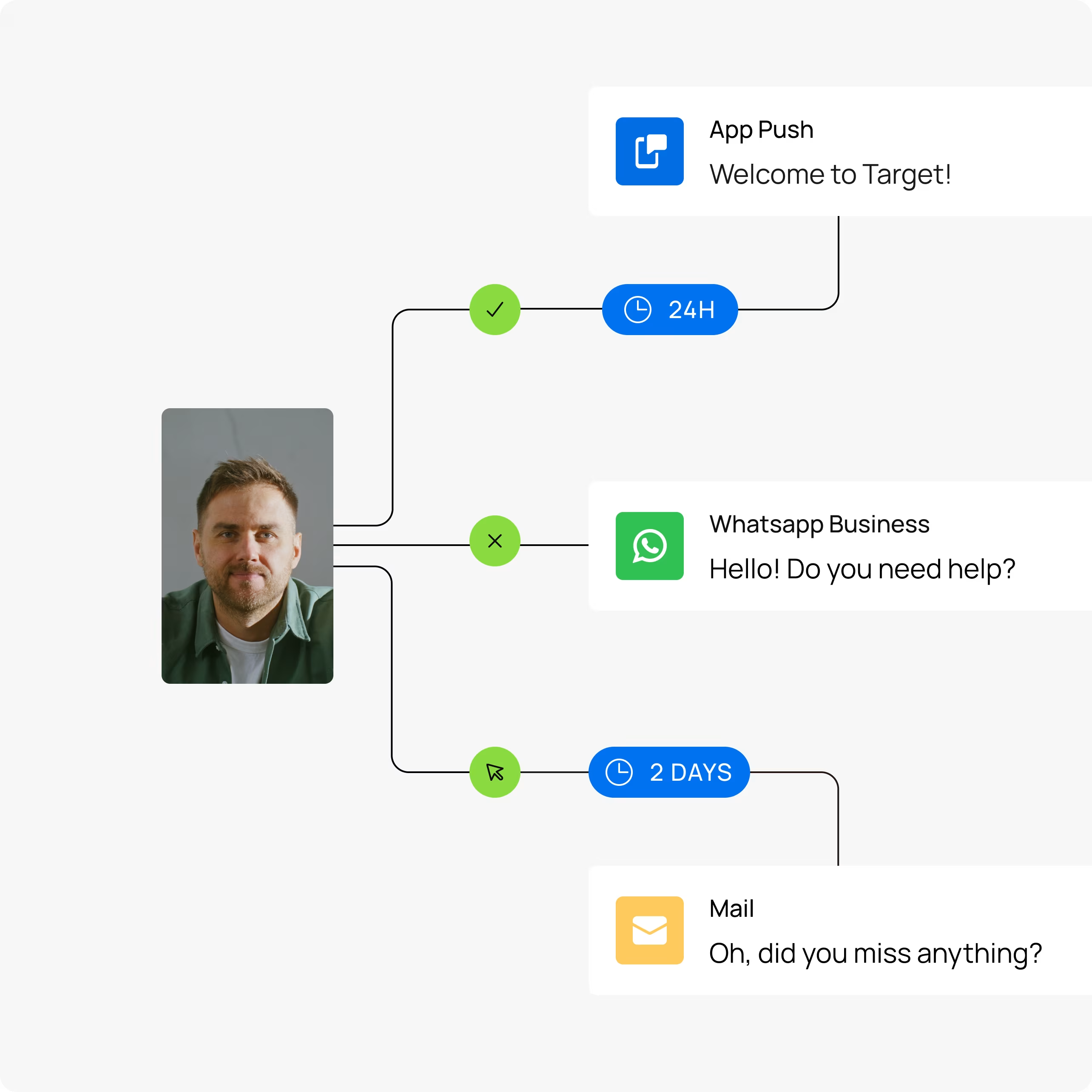
Combining Push Notifications and SMS
Using an omnichannel customer engagement solution such as indigitall gives you much greater flexibility in how you deliver messages to your customers. The ability to access and use both push notifications and SMS enables more efficient automation and cost reduction when prioritizing push notifications first.
Strategies for Using Both Channels Synergistically
- Sequential Messaging:
-
-
- Start with a push notification for immediate visibility
- Follow up with an SMS for users who didn’t engage with the push
- Example: Send a push about a flash sale, then an SMS reminder before it ends
-
- Channel Preference:
-
-
- Allow users to choose their preferred communication channel
- Use push for app-engaged users and SMS for those who prefer texts
-
- Urgency-Based Approach:
-
-
- Use push for time-sensitive, app-related information
- Reserve SMS for critical updates or when immediate action is required
-
- Content Differentiation:
-
-
- Use push for rich media and interactive content
- Utilize SMS for concise, text-based messages and direct links
-
- Behavioral Triggers:
-
- Implement push notifications for in-app behaviors
- Use SMS for broader, account-related activities
Creating an Omnichannel Communication Approach
- Consistent Messaging:
-
-
- Ensure brand voice and tone are uniform across push and SMS
- Maintain a cohesive narrative across all channels
-
- Cross-Channel Journey Mapping:
-
-
- Design user journeys that seamlessly integrate both push and SMS
- Example: Welcome series using push for app onboarding and SMS for account verification
-
- Integrated Analytics:
-
-
- Use a unified analytics platform to track engagement across both channels
- Analyze cross-channel performance to optimize overall strategy
-
- Complementary Content Strategy:
-
-
- Use push for quick updates and teasers
- Follow up with more detailed information via SMS or email
-
- Synchronized Timing:
-
- Coordinate push and SMS campaigns to reinforce messages without overwhelming users
- Example: Send a push notification about a new feature, then an SMS with usage tips a day later
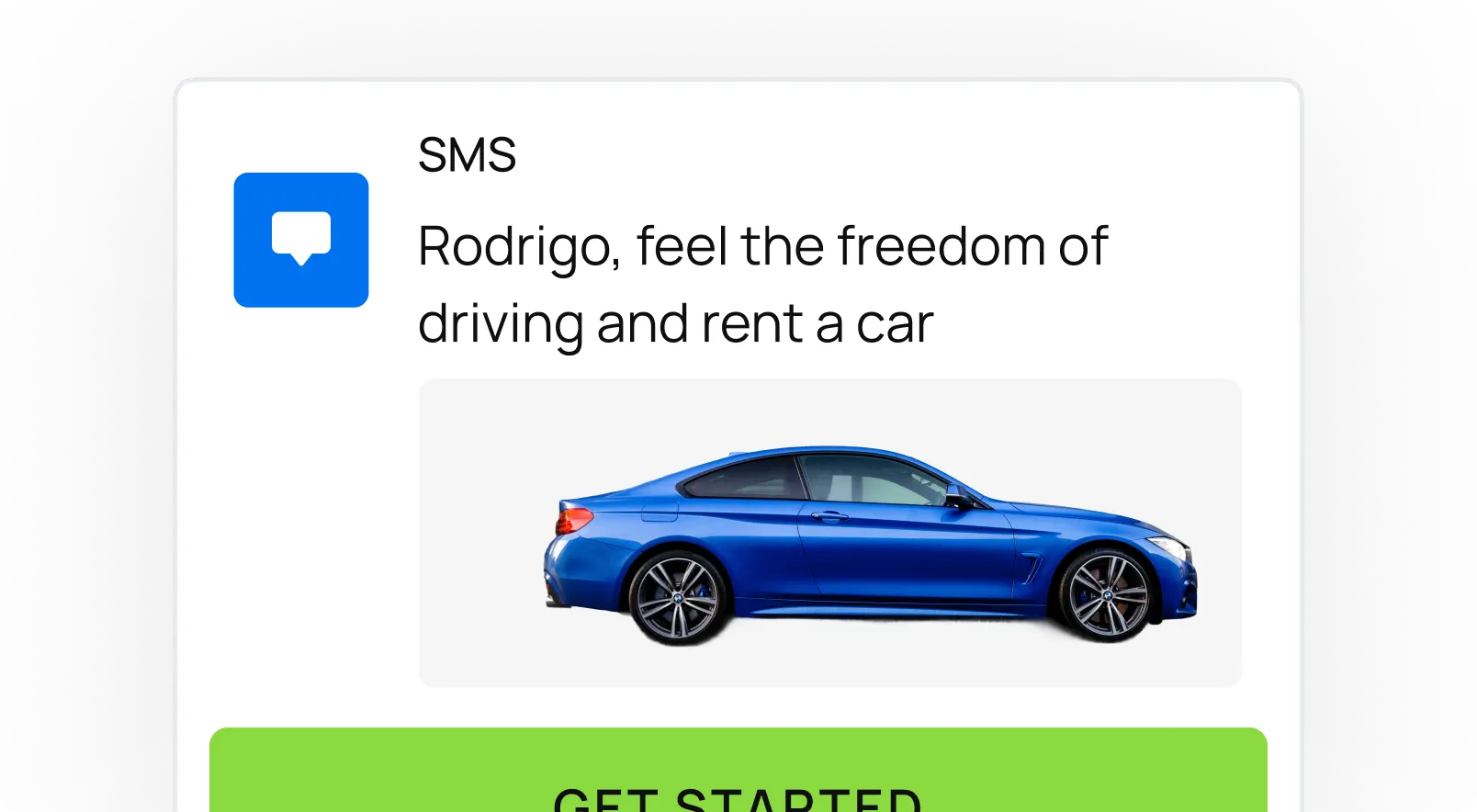
Segmentation and Targeting Across Channels
- Engagement-Based Segmentation:
-
-
- Target highly engaged app users with push notifications
- Use SMS for less active users or those who haven’t installed the app
-
- Demographic Targeting:
-
-
- Tailor channel usage based on age, location, or other demographic factors
- Example: Use push for younger audiences and SMS for older demographics
-
- Behavioral Segmentation:
-
-
- Analyze user behavior to determine the most effective channel for each segment
- Example: Use push for users who frequently open the app, SMS for occasional users
-
- Preference-Based Targeting:
-
-
- Allow users to set communication preferences and respect their choices
- Use this data to create segments for push-only, SMS-only, and multi-channel communications
-
- Lifecycle Stage Targeting:
-
-
- Adjust channel mix based on the customer’s lifecycle stage
- Example: Use more push notifications for new users to encourage app engagement, shift to a balance of push and SMS for loyal customers
-
- Context-Aware Targeting:
-
- Use push for location-based notifications when users are near physical stores
- Employ SMS for broader, non-location-specific communications
By strategically combining push notifications and SMS, businesses can create a more effective, personalized communication strategy that leverages the strengths of each channel. This omnichannel approach, when properly segmented and targeted, can significantly improve user engagement, retention, and overall customer experience.
Future Cost Trends
Emerging Technologies and Their Impact on Costs
- RCS Marketing
- RCS may quicky overshadow traditional SMS marketing, with more rich media options and greater security.
- 5G Networks:
-
-
- Faster, more reliable connections may reduce delivery costs for push notifications
- Potential for richer, more interactive push notifications without significant cost increases
- SMS costs likely to remain stable, as 5G primarily benefits data-based communications
-
- Internet of Things (IoT):
-
-
- Increased number of connected devices may lower per-device costs for push notifications
- New opportunities for location-based and context-aware messaging, potentially improving ROI
- SMS may see renewed importance for IoT device communication due to its reliability
-
- Blockchain:
-
-
- Could reduce fraud and improve security in messaging, potentially lowering associated costs
- May introduce new cost-effective ways to verify message delivery and engagement
-
- Edge Computing:
-
- Could reduce latency and costs associated with push notification delivery
- May enable more cost-effective real-time personalization of messages
The Role of AI in Cost Reduction
- Predictive Analytics:
-
-
- AI-driven analytics may optimize send times and content, improving engagement rates and ROI
- Could reduce costs by minimizing unnecessary or ineffective messages
-
- Natural Language Processing (NLP):
-
-
- May enable more sophisticated automated responses, reducing human intervention costs
- Could improve message relevance and personalization without increasing costs
-
- Automated Content Generation:
-
-
- AI may create personalized message content at scale, reducing content creation costs
- Could optimize message wording for better engagement, improving cost-effectiveness
-
- Intelligent Routing:
-
- AI could determine the most cost-effective channel (push, SMS, email) for each user and message type
- May reduce overall messaging costs by using the most appropriate and cost-effective channel
Predictions for the Evolution of Push Notifications and SMS
- Push Notifications:
-
-
- Costs likely to decrease further as technology improves and competition increases
- Expect more advanced targeting and personalization options without significant cost increases
- Potential for new, more interactive formats that could command premium pricing
-
- SMS:
-
-
- Costs may remain relatively stable due to established infrastructure
- Possible slight decrease in costs as operators seek to compete with OTT messaging apps
- Potential for new, enriched SMS formats (e.g., RCS) that could offer more value at a higher price point
-
- Convergence:
-
-
- Increasing integration between push notifications and SMS in omnichannel platforms
- Potential for bundled pricing models that include both channels
- AI-driven systems may automatically choose between push and SMS based on cost-effectiveness and user preferences
-
- Regulatory Impact:
-
-
- Stricter data privacy regulations may increase compliance costs for both channels
- Could lead to more transparent pricing models and opt-in processes
-
- Shift to Quality Over Quantity:
-
- Focus may move from bulk messaging to more targeted, high-value communications
- This could lead to higher per-message costs but better overall ROI
While both push notifications and SMS are likely to see continued evolution in terms of capabilities and pricing models, push notifications may experience more significant cost reductions and technological advancements. The integration of AI and emerging technologies will play a crucial role in optimizing costs and improving the effectiveness of both channels. Businesses should stay informed about these trends and be prepared to adapt their strategies to leverage the most cost-effective and impactful communication methods.
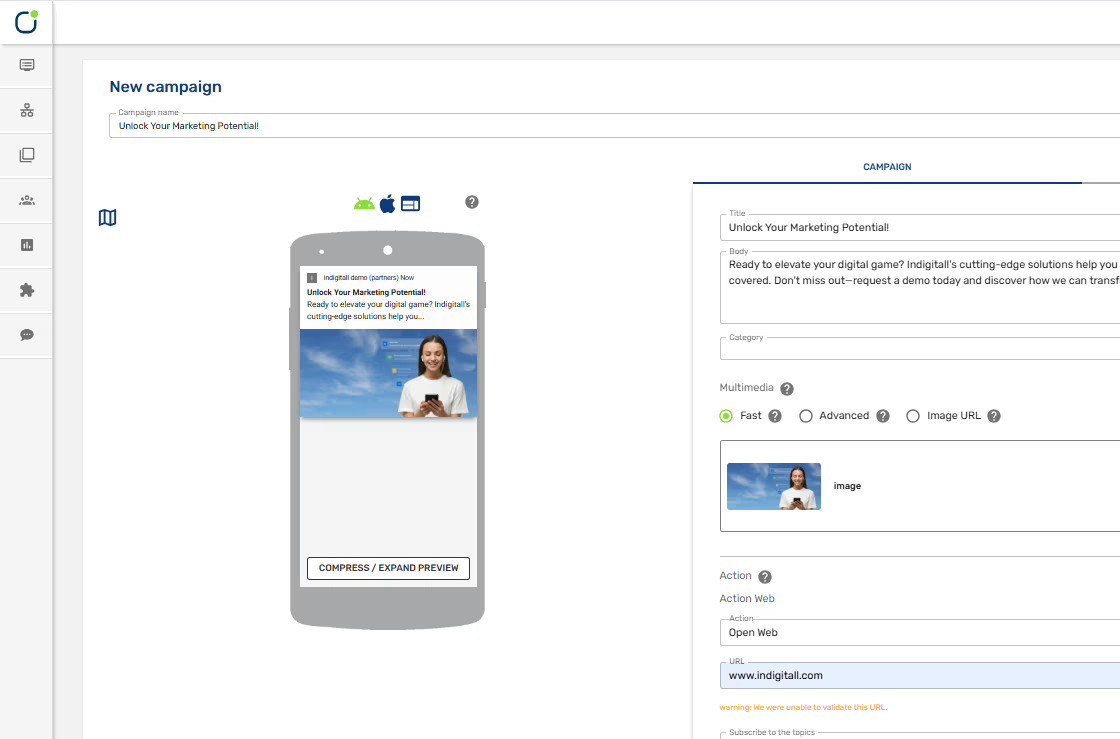
How indigitall Reduces Costs with Encrypted Push Notifications and SMS Integration
indigitall offers a comprehensive solution that combines the security of encrypted push notifications with the flexibility of SMS integration, helping businesses reduce costs while enhancing their communication strategies.
Cost-Effective Encrypted Push Notifications
indigitall has developed an encrypted push notification system specifically designed for secure delivery of sensitive data and financial transactions. This solution offers several cost-saving benefits:
- Savings of up to 60%: By using encrypted push notifications for financial activities, e-commerce, or marketplaces, businesses can significantly reduce their communication costs.
- Enhanced Security: the only service to offer push notifications with end-to-end encryption.
- Compliance with Regulations: The encrypted push notifications meet the requirements of the European Directive PSD2 for Two-Factor Authentication (Strong Customer Authentication: SCA), potentially saving costs related to regulatory compliance.
Flexible SMS Integration
While push notifications offer cost advantages, indigitall recognizes the importance of SMS in certain scenarios. Their platform provides:
- Omnichannel Integration: indigitall seamlessly integrates push notifications with other channels, including SMS, allowing businesses to use the most cost-effective method for each communication.
- Salesforce Connector: The platform’s Salesforce connector enables businesses to incorporate both web push and SMS into their Salesforce Customer Journey, optimizing communication costs across channels.
AI-Powered Optimization
indigitall’s use of artificial intelligence helps further reduce costs:
- Personalized Messaging: AI-powered technology creates tailored messages for each user, potentially reducing churn rates and improving ROI.
- Automated Campaigns: The platform allows for automated push notification campaigns based on user behavior, saving time and resources.
- Performance Analytics: Robust analytics and A/B testing capabilities help businesses continually refine their strategies for maximum cost-effectiveness.
Easy Implementation and Scalability
indigitall offers quick and easy installation for various platforms, including Shopify stores. This ease of implementation can significantly reduce setup costs and time-to-market for businesses of all sizes.
By combining encrypted push notifications with SMS integration and AI-powered optimization, indigitall provides a versatile, secure, and cost-effective solution for businesses looking to enhance their customer communication strategies. This approach allows companies to leverage the most appropriate and economical channel for each message while maintaining high levels of security and engagement.
Conclusion
Recap of Key Differences and Similarities
Push Notifications and SMS are both powerful tools for engaging with customers, but they have distinct characteristics that make them suitable for different scenarios.
Key Differences:
- Delivery Method: Push notifications require an app and internet connection, while SMS works on any mobile phone with cellular service.
- Cost Structure: Push notifications are generally more cost-effective, especially at scale, while SMS costs increase linearly with volume.
- Rich Media: Push notifications support rich media and interactive elements, whereas SMS is limited to text.
- Reach: SMS has broader reach, especially in areas with limited smartphone penetration or poor internet connectivity.
- User Perception: Push notifications are often seen as less intrusive, while SMS may be perceived as more urgent.
Similarities:
- Both can deliver time-sensitive information quickly.
- Both require user opt-in and are subject to regulations.
- Both can be personalized and segmented for targeted messaging.
- Both offer analytics and tracking capabilities, though push notifications generally provide more detailed insights.
Guidelines for Choosing the Right Channel for Specific Goals
- Immediate, Broad Reach:
-
-
- Choose SMS for critical, time-sensitive messages that need to reach the widest possible audience.
- Example: Emergency alerts, appointment reminders, or account security notifications.
-
- App Engagement and Retention:
-
-
- Use push notifications to drive app opens, feature adoption, and user retention.
- Example: New feature announcements, personalized content recommendations, or in-app promotions.
-
- Rich, Interactive Content:
-
-
- Opt for push notifications when you need to include images, videos, or interactive elements.
- Example: Showcasing new products, sharing visual content, or providing actionable buttons.
-
- Cost-Effective High-Volume Messaging:
-
-
- For frequent, large-scale communications, push notifications are generally more economical.
- Example: Daily updates, news alerts, or social media-style notifications.
-
- Offline or Non-Smartphone Users:
-
-
- Use SMS to reach users without smartphones or in areas with limited internet connectivity.
- Example: Reaching customers in rural areas or developing markets.
-
- Transactional Messages:
-
-
- Consider push notification for important transactional messages that require high delivery rates.
- Example: Order confirmations, shipping updates, or payment receipts.
-
- User Preference:
-
-
- Offer both channels and allow users to choose their preferred method of communication.
- Example: Letting customers select how they receive account updates or promotional offers.
-
- Compliance and Security:
-
-
- For highly sensitive information requiring encryption, consider secure push notifications.
- For regulated industries with specific compliance requirements, choose the channel that best meets those needs.
-
- Omnichannel Strategy:
-
-
- Use both channels as part of an integrated communication strategy, leveraging the strengths of each.
- Example: Send a push notification for an initial offer, followed by an SMS reminder if the user hasn’t engaged.
-
- Testing and Optimization:
-
- Continuously test both channels to determine which performs best for your specific audience and use cases.
- Use A/B testing and analytics to refine your messaging strategy over time.
In conclusion, the choice between push notifications and SMS should be guided by your specific business goals, target audience, and the nature of your messages. By understanding the strengths and limitations of each channel, and potentially using them in combination with systems like indigitall, you can create a more effective and efficient communication strategy that enhances customer engagement and drives business results.








